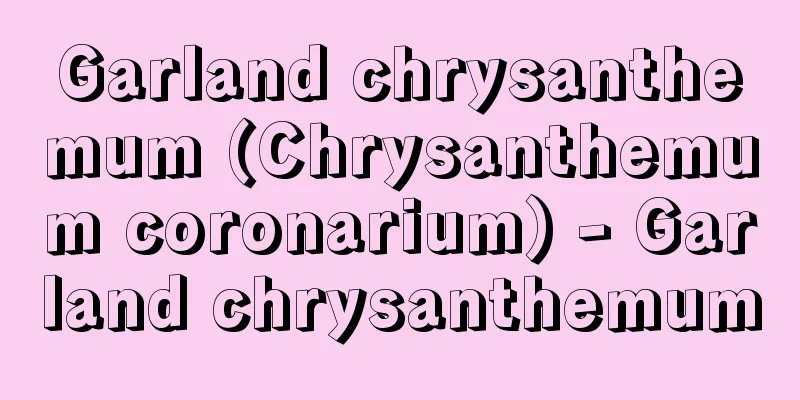Blight - Dougarebyo

|
This disease occurs in fruit trees such as peaches, apples, chestnuts, and grapes, forest trees such as fir, Abies sachalinensis, larch, and poplar, and woody plants such as mulberry. It is called canker disease because the pathogen parasitizes the trunk of the tree and causes the upper part of the tree to die from the diseased area, resulting in the so-called "canker disease." The pathogen differs depending on the type of host, but all are fungi belonging to the Ascomycete family (also called canker disease family), such as Diaporthe, Leucostoma, Cryphonectria, and Balsa. In the Diaporthe genus, there are apple canker disease caused by Diaporthe tanakae , fir, Abies sachalinensis, and larch canker disease caused by D. conorum , and mulberry canker disease caused by D. nomurai . In the Leucostoma genus, there are peach and plum canker disease caused by Leucostoma persoonii . In the Cryphonectria genus, chestnut canker caused by parasitism by Cryphonectria parasitica is a major cause of damage. In the Balsa genus, canker caused by Valsa abietis on Japanese cypress and sawara is called canker disease. The canker disease on apples and other fruit trees caused by parasitism by the Balsa genus is called canker disease. The canker disease fungus is generally highly saprophytic, so the tree is more susceptible to damage when its vigour weakens due to cold weather. Once parasitised, the pathogenic fungus remains on the tree throughout the seasons and repeats infection over a long period of time, making it difficult to control. In late autumn, it can be prevented by applying undiluted lime milk or lime sulfur mixture from the base of the tree to a height of about 30 cm above the ground. In addition, in diseased trees, the diseased parts can be scraped off and thiophanate-methyl or organocopper coating applied. [Toshihiro Kajiwara] [Reference] | | |Source: Shogakukan Encyclopedia Nipponica About Encyclopedia Nipponica Information | Legend |
|
モモ、リンゴ、クリ、ブドウなどの果樹類、モミ、トドマツ、カラマツ、ポプラなどの林木、クワなどの木本類に発生する病気。病原菌が木の幹に寄生し、病患部から上部が枯れ、いわゆる「胴枯れ」症状になるため、胴枯病とよばれる。病原は宿主の種類によって異なるが、いずれも子嚢(しのう)菌類、ディアポルテ菌科(胴枯病菌科ともいう)のディアポルテ、レウコストマ、クリフォネクトリア、バルサなどの属に属する菌である。ディアポルテ属ではDiaporthe tanakaeによるリンゴ胴枯病、D. conorumによるモミ、トドマツ、カラマツ胴枯病、D. nomuraiによるクワ胴枯病がある。レウコストマ属ではLeucostoma persooniiによるモモ、スモモ胴枯病がある。クリフォネクトリア属ではCryphonectria parasiticaの寄生によるクリ胴枯病が被害が大きく重要である。バルサ属ではValsa abietisによるヒノキ、サワラなどの胴枯病がある。なおバルサ属の寄生によっておこるリンゴその他種々の果樹類の胴枯れはとくに腐らん病といわれる。胴枯病菌は一般に腐生性が強いため、寒さなどによって樹勢が劣えたときに被害を受けやすい。一度寄生すると病原菌は四季を通じて樹上に残り、長い期間にわたり感染を繰り返すので防除が困難である。晩秋、木の地際(じぎわ)部から地上30センチメートルぐらいの高さまで石灰乳または石灰硫黄(いおう)合剤の原液を塗布して予防する。また発病した木では、病患部を削り取って、チオファネート・メチル塗布剤または有機銅塗布剤を塗布する。 [梶原敏宏] [参照項目] | | |出典 小学館 日本大百科全書(ニッポニカ)日本大百科全書(ニッポニカ)について 情報 | 凡例 |
>>: Tukārām (English spelling)
Recommend
Alienation (English spelling)
This refers to the situation in which the product...
Ambiguous - Unclear
...The pass is the watershed of the Sasaya Highwa...
Amritsar Massacre - Amritsar Massacre
A massacre of Indian civilians by British troops i...
Hokyoji Temple
Located in Kamigyo Ward, Kyoto City, this temple w...
National Collection of Fine Arts
…The Society's main facilities are located in...
Russell, R.
...Hotels, theaters, and entertainment facilities...
"Gyozanshuryakubon" - Gyosanshuryakubon
...This Soen edition became the prototype for the...
Coral - Coral
A general term for the species of coelenterates (a...
Müller's larva (English spelling) Mullerslarva
…Composite eggs are formed when an egg cell produ...
Aya
〘Emotion〙 (a word formed by combining the interjec...
Chrismon
A monogram (combination of letters) meaning Christ...
Kamishima
An island in the northeastern part of the Amakusa ...
Akseli Gallen‐Kallela
1865‐1931 A representative Finnish nationalist rom...
Euler's constant - Euler's constant
The series S n = 1 + 1/2 + 1/3 + ... + 1/ n diverg...
Thomas Middleton
English playwright. Born in London. He studied at...









